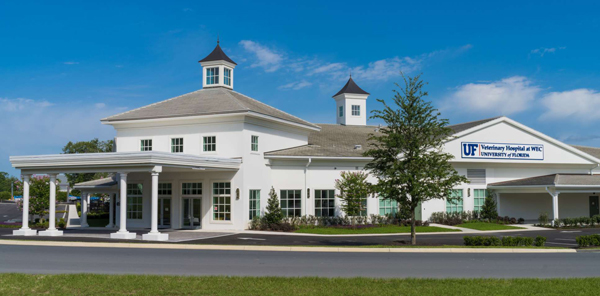UF Veterinary Hospital Offers Leading Edge Treatment to Performance Horses
The UF Veterinary Hospital at WEC offers leading-edge care to equine athletes on site as well as horses from the surrounding area, dogs and cats. No matter what events or activities bring you to WEC, our team of board-certified specialists are here to serve you.
On the cusp of the 2022 Fall Show Series, we wanted to highlight some of the key services and expertise available to our equine clients. Our equine veterinarians are board-certified in equine sports medicine and are experienced performance horse veterinarians with broad skill sets, expertise and knowledge in traditional as well as novel therapies.
Our veterinarians are well versed in the demands of each individual horse sport and offer a range of treatments to ensure your horse performs at its best. We offer ACVSMR performance evaluations for lameness, purchase, neurologic, respiratory, poor performance as well as additional categories, including Soloshot videography, gastrointestinal tract examinations and telemetric electrocardiography.
In addition to sports medicine, we offer a variety of rehabilitation treatments and programs, which we’ll focus on here, as well as state-of-the art equine diagnostic imaging by board-certified veterinary radiologists.
Rehabilitation therapy is used for a variety of conditions and to improve overall fitness and wellness in horses. We will work both with you and your veterinarian to tailor a program to help get your horse back into the ring faster and stronger, minimizing the risk of injury. Many of our treatments can be used either in-hospital or at your horse’s stall.
Key rehabilitation modalities at our fingertips are halotherapy, also known as dry salt therapy; hydrotherapy, vibration therapy (Theraplate) and solarium therapy.
Dry salt therapy is derived from the age-old practice of dry salt cave therapy. It involves the aerosolization of high quality, finely ground salt particles into a specially built low humidity-controlled room. While a new therapy in veterinary medicine, early reports in horses have claimed multiple benefits for conditions as including COPD, equine asthma, sinusitis, scratches, and bacterial and fungal skin infections. For treatment, the horse simply stands in the halogenated room for 20-30 minutes two to three times per week.
Hydrotherapy is available via two water treadmills with cold or warm salt water treatments available. Exercise in water has been shown to increase joint mobility in horses’ limbs and back, improve muscle strength and control, and increase aerobic capacity, all while decreasing impact. The use of cold water results in vasoconstriction, reducing inflammation, blood flow and fatigue. Warm water causes vasodilation, which also helps reduce inflammation, but increases blood flow and warms tissue to allow for increased elasticity of muscles and joints, and activates the parasympathetic system, or “relax mode”. Water temperature and height will be tailored to your horse’s need and goals.
These treadmills are useful as part of your horse’s regular training schedule; they can add fitness, while limiting the impact on soft tissues, bones, and joints. Horses enjoy the novelty of the experience as well as the break from their weekly routine. In addition, the salt water can benefit their skin.
Rounding out our rehabilitation offerings are Theraplate, or vibration therapy, and solarium therapy.
In vibration therapy, horizontal and vertical oscillations are created to stimulate continuous small muscle contractions mimicking the horse’s natural movement. These muscle contractions improve cardiovascular and lymphatic circulation, resulting in increased tissue oxygenation and removal of metabolic waste. Vibration therapy promotes joint stability and improves balance and coordination in the symptomatic horse. Core strengthening exercises can combine with vibration therapy to improve musculoskeletal and neurologic function. Additionally, vibration therapy has been shown to decrease stress hormones such as cortisol, and, in people, promotes an overall sense of well-being.
Solarium therapy uses infrared light to increase temperature and blood flow, specifically to the back, allowing for relaxation of tight muscles. This treatment also stimulates blood flow, leading to improved oxygenation of tissue, increased tissue metabolism and the removal of metabolic toxins, such as lactic acid. Similar to vibration therapy, infrared light therapy has been shown to decrease stress and induce a relaxed state through increases in serotonin and decreases in cortisol levels.
Learn more about all of our services at hospitals.vetmed.ufl.edu/wec or contact us at (352) 414-3858 for information and appointments. Hours of operation are Monday through Friday, 8am to 5pm.











